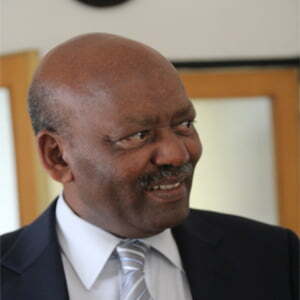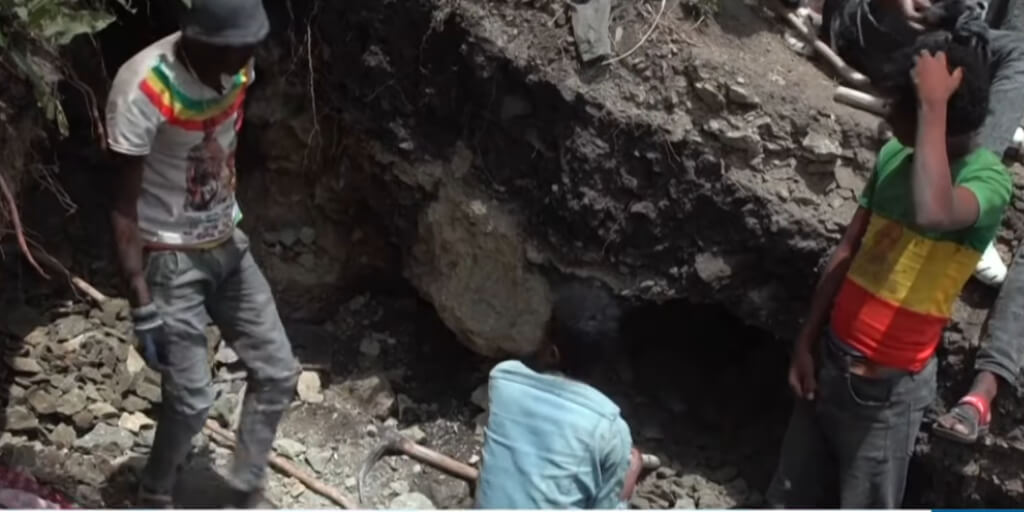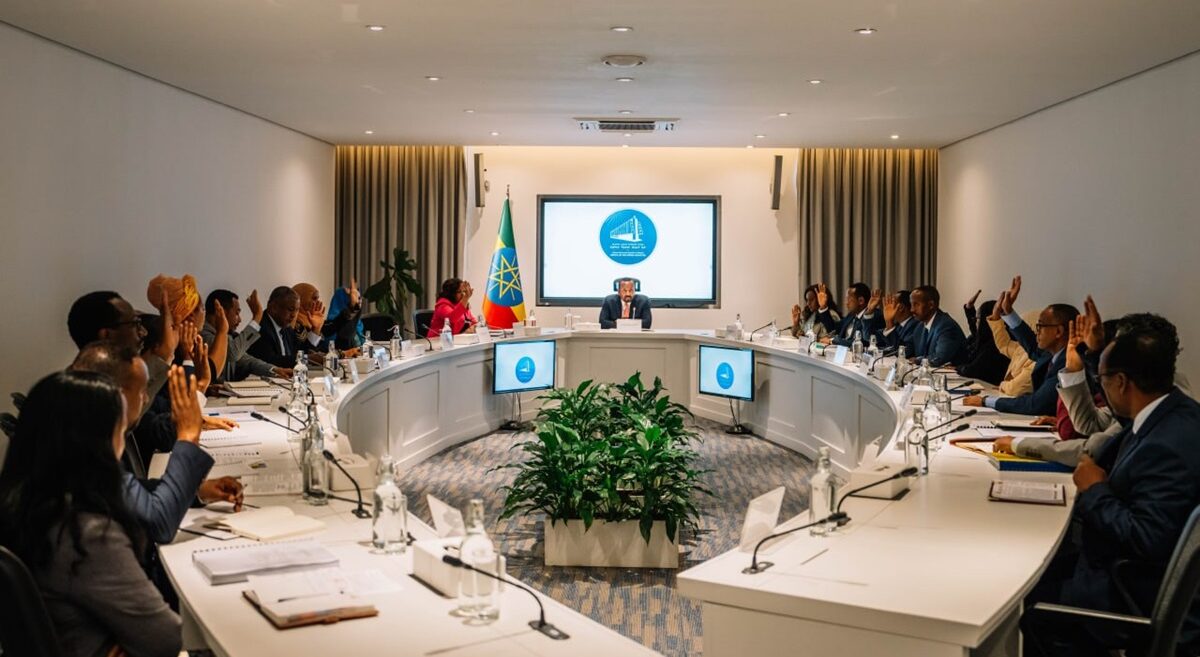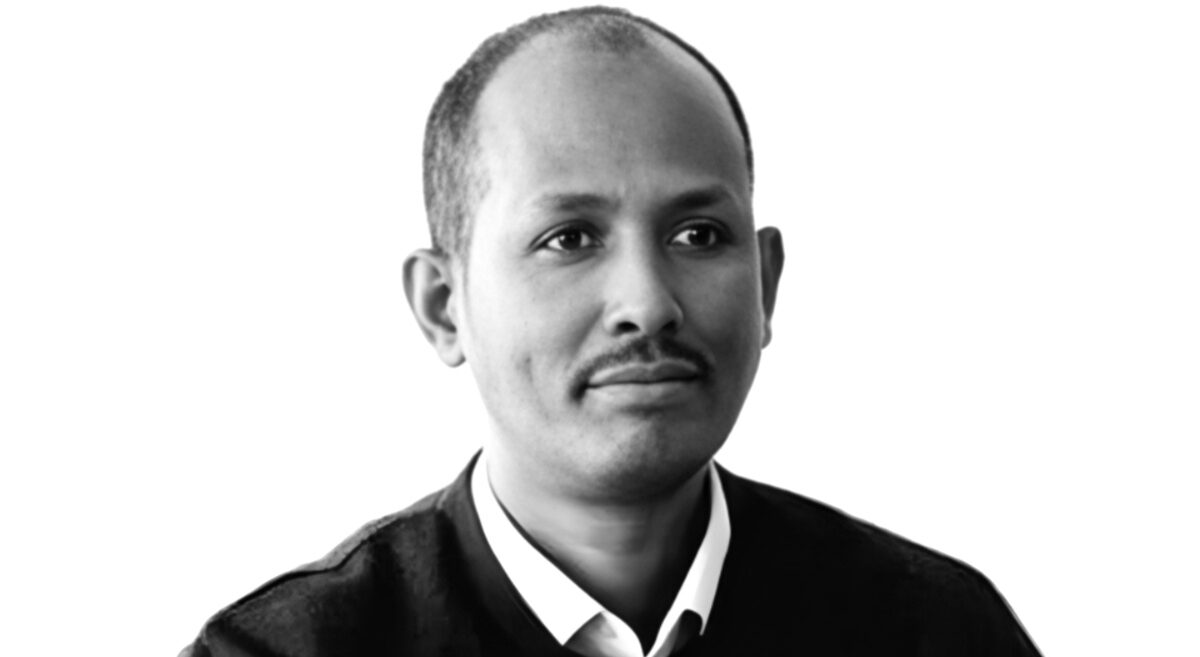Ethiopia’s Constitution: Can it stand the test of time?
Dr. Negaso Gidada studied History at the Haile Sellasie 1st University (now the Addis Abeba University) from 1966 to 1971. From ‘71 to ‘74 he served as school director and history teacher in Aira, in Western Wallaga. He left for Germany in October 1974 and lived there until July 1991. During this time he studied History in the department of Ethnology at the J.W.Goethe University in Frankfurt am Main. During the 1991 regime change in Ethiopia Dr. Negaso left Germany for Ethiopia and joined the Oromo People’s Democratic Organization (OPDO), which makes up one of the four coalitions of the ruling party, the Ethiopian People’s Revolutionary Front (EPRDF). In Ethiopia one of the milestones of Dr. Negaso’s political activities in early ‘90s was to become a member of the Constitutional Drafting Committee, which was tasked to draft the present Constitution of the Federal Democratic Republic of Ethiopia (FDRE). Dr. Negaso also served as Chairman of the Constitutional Assembly, which adopted the current constitution. In 1995 he became the first Head of State of the FDRE and had signed on the proclamation that adopted the final copy of the constitution, which remained intact, but controversial, as of yet.
In this exclusive interview with our editor-in-chief, Tsedale Lemma, Dr. Negaso discussed the making of the constitution; the misgivings; the fault lines; and the outstanding controversies that need to be addressed. Excerpts:
Addis Standard – Can you please briefly tell me the context in which Ethiopia’s current constitution was adopted?
Dr. Negaso – In 1991, in the wake of the collapse of the military Derg, there were different national liberation movements which were very active all over the country. Among these the strongest ones were the Tigray People Liberation front (TPLF) and the Oromo Liberation Front (OLF). Others include West Somali Liberation Front (W.S.L.F), Ogden National Liberation Front (O.N.L.F.), and the Sidama National Liberation Movement (SNLM). There were also several liberation movements or fronts that represented the peoples of Afar, Gambella, and Benshangul, among the few. So we realized that if something was not quickly done the country would have completely disintegrated following the imminent collapse of the Derg. In addition there was also the Eritrean People Liberation Front (EPLF), which practically controlled the whole of Eritrea up to Assab and was fighting for independent Eritrea. The only way to keep Eritrea as part of Ethiopia was through continued war, which the Derg couldn’t manage for 17 years of its rule. So we didn’t want to continue fighting to keep Eritrea; we also didn’t want Ethiopia to disintegrate. Therefore we said something has to be done. That is the background when the peace conference of July 1991 took place and a Transitional Charter was adopted. That Transitional Charter, you could say, was the basis of the current constitution.
If the July 1991 peace conference was one of the major happenings in post Derg, what was the breakthrough of that peace conference?
The Peace Conference decided to establish a transitional government which was supposed to draft and adopt a constitution in three years time. It was that transitional government which, through a transitional parliament, decided to establish a Constitutional Drafting Commission that was supposed to include representatives from all organizations, movements, and fronts that were active in facilitating the final days of the Derg. The current constitution is therefore the result of the deliberations by that Constitutional Drafting Commission.
How did you come about being in that Constitutional Drafting Commission?
I came back from Germany, where I was living, at the end of May1991 and decided to spend time observing the Oromo People’s Democratic Organization (OPDO), one of the political actors in the wake of the collapse of the Derg. I spent time observing them and other organizations that later on formed the ruling EPRDF; I was discussing with the leaders of OPDO about their programs, their perspectives and their visions. Then I went back to Germany and decided to come to Ethiopia for good at the end of July 1991, the same time when the transitional government was being formed. So I joined the OPDO at the end of July. Just as I joined the OPDO the transitional Parliament was formed and it decided to establish the Transitional Parliament. It was then that the OPDO leadership asked me to be one of its representatives and become a member of the Transitional Parliament.
What did this Transitional Parliament look like?
The EPRDF, as a coalition, ruled the country as a Provisional Government from May 28 (the day the Derg finally collapsed) to August 15, 1991. Then as a result of the peace conference of July 1991, a House of People’s Representatives (a transitional parliament) was formed on August 15th, 1991. It had 87 members. Accordingly the OLF, TPLF, and EPDM (Ethiopian Peoples’ Democratic Movement, which later on became the Amhara Peoples’ Democratic Movement, APDM), and the OPDO got 12 seats each. The other minor parties, such as the Oromo Islamic Liberation Movement (OILM) and the Oromo Unity Party (OUP) and the Military Democratic Officers Party (MDOP) were given seven seats each and filled the remaining 39 seats.
But on what bases did the Transitional Parliament decide to establish a Constitutional Drafting Commission? And what was your role?
What happened was the Parliament (its speaker was the late Meles Zenawi who was also at the same time the president of the country during the transitional period) decided that the Commission be established. The Parliament announced on radio, television and all newspapers in the country at that time that it was going to have a Constitutional Drafting Commission and that parties which are interested to be members of the Drafting Commission could register themselves. A committee in the transitional parliament decided who should become a member of the commission and who not.
I was just a member of the Commission. The late Kifle Wodajo was the chairman, while Ato Dawit Yohannes was the Secretary. Seven members of the commission were from the transitional parliament; out of the seven only two of us, Dawit Yohannes and myself, were from the EPRDF. The rest were drawn from civic organizations, from non-EPRDF and non-members of the Transitional government.
But many legal experts express several reservations into the very formation of that Commission and whether it was participatory enough. As someone who was in the middle of it, what do you think was the fault line in the formation of that commission?
Naturally only parties which were members of the peace conference in July 1991 were supposed to be represented in the Commission. But many did not. Besides, important parties who were not invited to participate in that Peace Conference, for example, the All Ethiopian Socialist Movement (AESM), the Ethiopian Workers Party (EWP), and the Ethiopian People’s Revolutionary Party (EPRP) should have participated but unfortunately they didn’t. And then we have the case, for example, the OLF and other Oromo organizations, which were part of the Transitional Government and the Transitional Parliament but withdrew from both and thus did not take part in the Constitutional Drafting Commission.
In addition, other parties which were members of the Peace Conference, such as the Ethiopian Democratic Unity (EDU) and the Moa Anbessa (monarchist) Party were part of the Commission at the beginning but for some reason they left the process.
For all its shortcomings, a Constitutional Drafting Commission was formed and did come up with the first draft of the constitution. But what were the major organizing principles that the Commission considered? What made the Commission decide on what sort of constitution was needed for a country like Ethiopia?
We took the main controversial issues at the time. For Example, the issue of monarchy; the issue of state structure (should it be parliamentary or presidential?). And there were other questions such as the question of the centrality of power or a federal structure. If we decentralize, what kind of decentralization do we need? Then there was the question of language; the question of addressing the needs of the different liberation movements which were struggling for the respect of the right of their respective nations and nationalities in Ethiopia; the question of self-determination was also the other controversial issue. So we discussed all these issues and put down about 73 questions. These questions were formulated like multiple choice questions in exam. For example on the issue of the type of government, we put presidential, monarchical or parliamentary. These questions were then distributed around so that people could discuss and vote on them…
Do you think this procedure was properly communicated? Do you think the majority of the people of Ethiopia knew what was happening? If so what was the response?
That is one of the major points where, looking back in retrospect, I criticize myself. We didn’t think properly. We knew that there was no proper atmosphere where different parties could organize meetings with their community members to discuss on the draft constitution before it became final. That was one of the biggest shortcomings in the process of the making of our constitution.
We have announced that meetings were to take place in different areas through the transitional administrations. And these meetings were organized in Kebeles, similar to what you see in television today. But from each Kebele only a few people came to participate; sometimes up to 100 to 150 people. Even then members of alternative political parties did not take part in the debates. But the answers were gathered from these discussions and were brought to experts who drafted them in to different articles. These experts brought the formulated articles to the meetings of the Constitutional Drafting Commission. We debated on the articles and with our recommendations they were sent back to the experts to have them put into the draft constitution. That was the process by which the constitution was drafted.
What were the most outstanding points during the process of drafting the constitution that were met with fierce debates from the people of Ethiopia?
The two questions that I remember vividly: the right to self-determination, which is now Article 39, and the question of land. These were very controversial even for the Commission. So what we did was put two alternative versions for each of these articles and brought the draft constitution to the Transitional Parliament. The Transitional Parliament discussed on that draft and brought it to the Constitutional Assembly for adoption.
But the election of the Constitutional Assembly was heavily criticized both by alternative parties within Ethiopia and the international community at large on the bases that the election was neither free nor fair. How representative was the Constitutional Assembly itself?
Representatives from each woreda (there were about 500) throughout the country were elected in to the Constitutional Assembly. And it is this assembly that finally accepted the constitution. The 73 questions that we put forward were put into 106 Articles. These 106 Articles were then brought to the constitutional Assembly and were adopted to become the country’s constitution. For your information, I was the chairman of the Assembly; former president of the Amhara regional state, Addisu Legese, was the vice chairman and former president of the southern nations and nationalities regional state, Abate Kisho, was the secretary.
Looking back at it today, I would say this was where the biggest mistake was committed. Even if the Constitutional Drafting Commission, the Transitional Parliament and then finally the Constitutional Assembly have discussed on the draft constitution and agreed on it, we should have presented it back to the people of Ethiopia in a form of referendum where the people could have had the chance to decide on whether what we formulated was according to their wish or not. That we did not do and I believe it was a mistake.
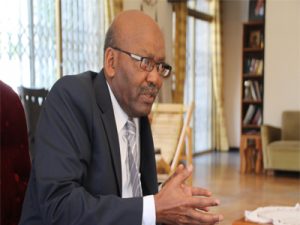
What prevented you from doing so?
The Constitutional Assembly, (I think we were 443), only discussed on the articles. It didn’t deliberate on the procedure of the constitution making. That was already pre-decided by the Transitional Parliament which decided whether it was enough to be accepted as a constitution.
The point is whether the process was democratic or not; first of all, from the beginning some parties were not allowed to participate in the process. Then the question of who should become a member of the Constitutional Drafting Commission and whether the selection was democratic or not is always debated. Then, of course, whether the draft constitution should have been brought to the people of Ethiopia for a referendum remains another widely contested point.
What do you think is the cumulative impact of these misgivings on the legitimacy or popular acceptance by Ethiopians of their constitution?
It certainly led to the questions we have; the controversies we are still facing and which are not solved yet. We still have different parties which are totally against the constitution, which continue to say this constitution must be thrown to the wastebasket. Not only that but the time; it has been adopted 21 years ago; changes – social, economic and political – have taken place, it is almost one generation. The young people have not discussed on it and have no idea what it is. Then you hear that many civic education teachers are being killed and some are being imprisoned and expelled from schools because they tend to question issues that the constitution have left out. That’s when you ask the legitimacy of this constitution. In these 21 years a lot of things have happened therefore we should ask whether this constitution, which we made at that time, is still acceptable as it is or whether changes should be brought into it. We should also discuss in open whether the outstanding issues that we are debating about today are related to the constitution itself or its implementation.
What are these outstanding questions that remain unanswered? And how should they be addressed? Should the constitution be amended? Revised? Or reformed?
I am not of the view that the constitutions be thrown into the wastebasket only to make another constitution. I know that there are unresolved controversies – for example on the question of the definition of nations and nationalities; controversies also abound on the type of federalism this country should have. There are many organizations and sections of the society who are against the form of federalism we have which is based on language and ethnicity. There is also the unresolved issue of the national flag; and then another burning issue of whether to add other languages to be the Federal government’s working language. Questions also remain on the sovereignty of the people – whether individual citizens should have the right to sovereignty or not. The constitution says “all sovereign power resides in the Nations, Nationalities and Peoples of Ethiopia” but what does that mean? The question of Article 39 – the right to self determination up to secession; the question of ownership of land; the question of state structure – division of power between the central government and federal states, among others. These are but few of the most outstanding issues in the constitution that need to be debated upon again.
I am of the view that we have to open up and have a democratic atmosphere in which different political and civil society organizations and the media freely discuss with the people of Ethiopia. There is no alternative than having the different forces – Ethiopian organizations, abroad or underground, or in the forest or registered legally – should come and seat together and discuss on these outstanding controversial issues of the constitution. The time is long overdue.
”Naturally only parties which were members of the peace conference in July 1991 were supposed to be represented in the Commission. But many did not”
But do you see that happening in the country where civil society organizations, the opposition and independent media, for example, are technically decimated?
That is why I am saying that a democratic atmosphere must be created; the ruling party has to change a lot to open up and allow democratic atmosphere to flourish. I am not saying that it has to change its political program. That is its choice. But it has to open up the atmosphere and create democratic conditions whereby the constitution can be scrutinized. Even the Parliament should go as far as organizing a big forum like the Peace Conference of the 1991 where different organizations can come together without discrimination and discuss on the different articles. From such forums may come out a body of lawyers, and different sectors of the society who can participate in the drafting of a constitutional amendment where it is needed.
If what you are suggesting is not to happen – if the opportunity doesn’t not avail itself for Ethiopians to talk back to their constitution; question the issues that are controversial; have the chance to change the sections that they feel do not represent them and so on, do you think this constitution stands the test of time?
I fear if something is not done this constitution will not hold the country together; people will eventually ask why we should have this constitution. If things are not improved, I fear the controversies will get out of hand and eventually put the country’s unity in danger. Something has to be done.
And there are issues of implementation of the constitution. For example is Article 29 properly implemented? What about Article 30, the question of assemblies? Article 31, the right of being organized? Article 38, the right to elect and be elected? What about the question of constitutional court? Who is supposed to provide constitutional interpretation when there are controversies? That power is given to the House of Federation which is dominated by one party as a result of the election system whereby the winner gets all. These are different questions on the constitution and its implementation that need urgent attention.
How much of the recent popular protest against the government do you attribute to the failure of or the proper implementation of the constitution?
The question of proper implementation of the constitution when it comes to the Oromo question is indeed the igniter – the question of the Addis Abeba Master Plan that goes back to Article 49/5 of the constitution where a law should have been made according to that constitution. It is now 21 years and this has not happened and people are not only fed up but very angry at this. The question of the extent of the boarder and the ownership of land by Addis Abeba, for example, has not been properly defined. The Oromo people are demanding that the special interest of Oromiya be respected. The human cost in 2003/4 when the decision to move the capital city of Oromiya to Adama and the protest crackdown in May-April 2014 is not forgotten. Add to that the problem of farmers who lost, are losing and will lose their land without proper compensation. These matters are constitutional issues.
If 21 years ago was today and you had a chance to do what you have done all over again, what would you have done different?
That is a difficult question. I would have opened the atmosphere; I would have created a democratic atmosphere. And then open discussions. As I say over and over again ask the people whether they accept this constitution or not; this is what I would have done if I have a chance to do it again.
Photos:Tesfalem Waldyes/Addis Standard


